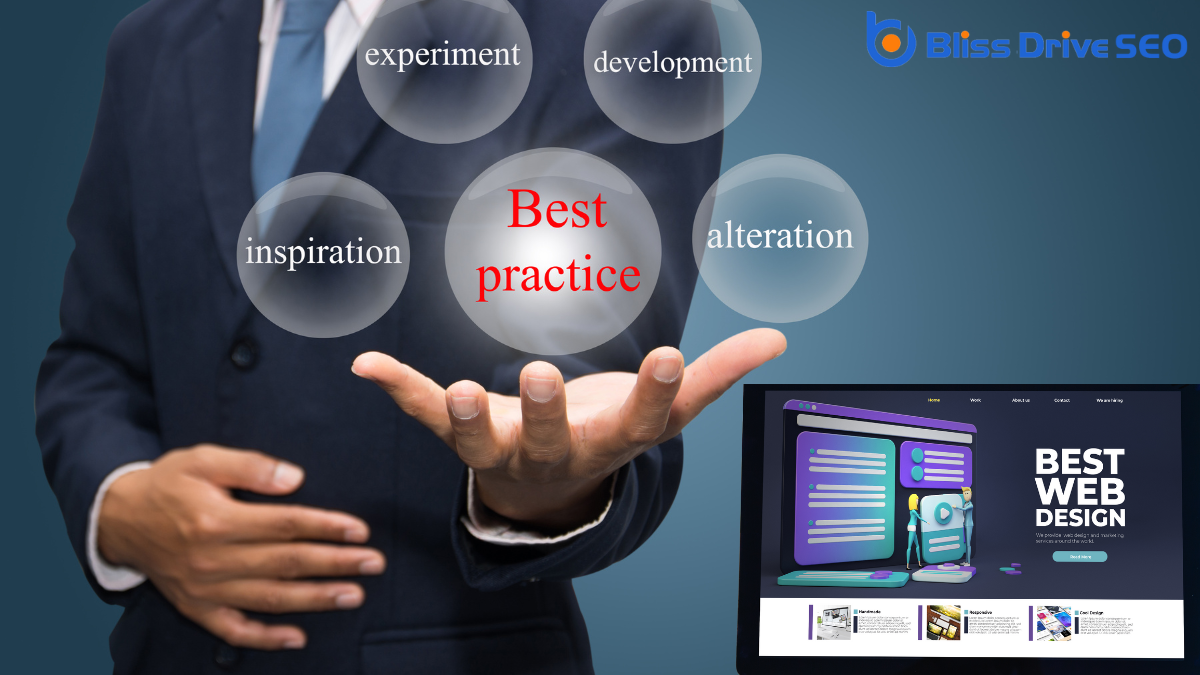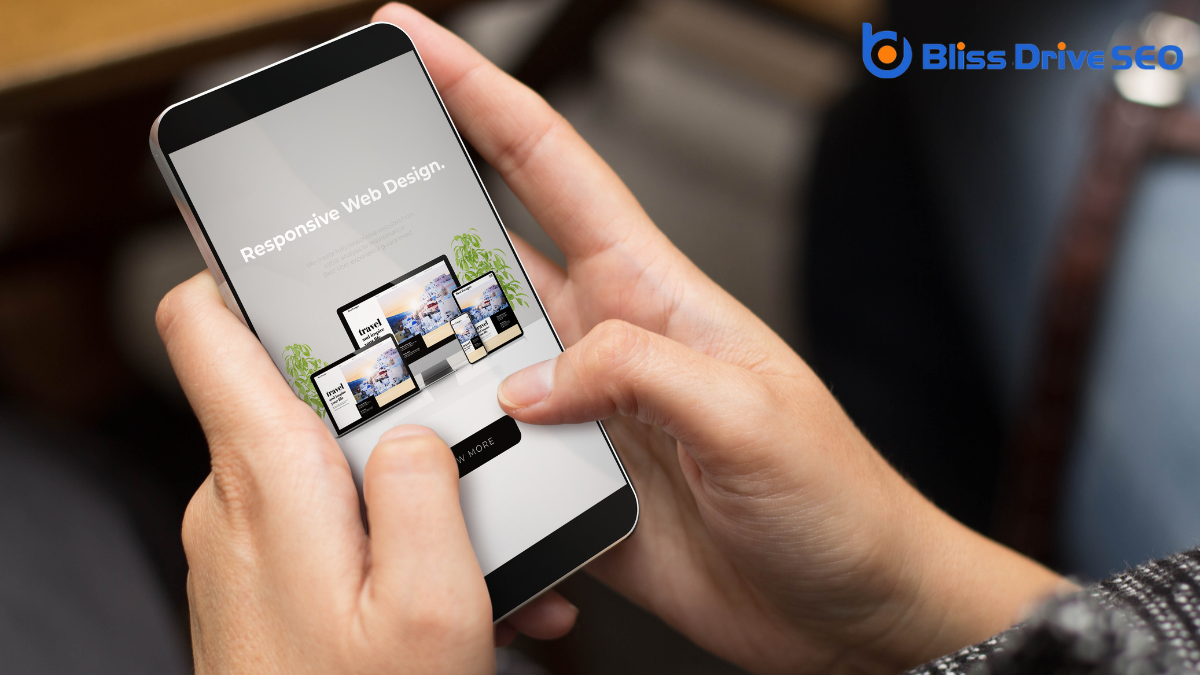Digital Marketing Services
Learn More About Us

When you think about the best practices for web design, consider how user-centric principles can transform a website's effectiveness. You need to focus on intuitive navigation and mobile responsiveness, ensuring users find what they need effortlessly on any device. Fast load times are essential; nobody likes a slow site. Consistent brandingThe process of creating a unique name, design, and image for a product or service in the consumer's ... ties everything together, but how do you achieve that with color and visuals? And what role does engaging content play in keeping your audience hooked? These elements form the backbone of a successful website, but what specific strategies can elevate them beyond the basics?
In today's digital landscape, placing the user at the center of your web design strategy isn't just beneficial—it's essential. By focusing on user-centric design, you guarantee that every element of your website serves a purpose and enhances the user experience.
Start by understanding your audience's needs, preferences, and behaviors. Conduct user research through surveys, interviews, or usability testingEvaluating a website's ease of use by testing it with real users and gathering their feedback. to gather valuable insights. This helps you create a website that resonates with your users and addresses their pain points.
Next, design with simplicity and clarity in mind. Avoid clutter and prioritize intuitive navigation so users can find what they need without frustration. Use consistent layouts, colors, and typography to create a harmonious experience. Confirm your content is clear and concise, offering value without overwhelming visitors.
Remember, users crave efficiency, so make interactions as seamless as possible.
Finally, don't forget to test your website regularly. Gather feedback and analyze user behavior to identify areas for improvement. By iterating on your design based on real user data, you can continually refine the experience.
Prioritizing user-centric design not only boosts satisfaction but also fosters trust and loyalty, driving long-term success for your website.

A website's mobile responsiveness is essential in today's digital world, where users access the internet from a variety of devices. You need to make certain that your website adapts seamlessly to different screen sizes, from smartphones to tablets. Mobile responsiveness isn't just about fitting content onto smaller screens; it's about creating an ideal user experience regardless of the device.
Start by using flexible grids and layouts. This approach allows your content to resize and rearrange itself to fit any screen.
Also, don't forget to enhance images and media. Large files slow down load times, which can frustrate users and leadA potential customer referred by an affiliate who has shown interest in the product or service but h... them to abandon your site. You can use responsive images that adjust the resolution based on the device.
Consider touch-friendly elements. Buttons and links should be easy to tap with a finger, avoiding too-small targets that can cause user errors. Make certain text is readable without zooming—use scalable fonts that adjust in size on smaller screens.
Lastly, test your website across various devices and browsers. Use tools like Google's Mobile-Friendly TestA tool that evaluates how well a website performs on mobile devices. to identify issues and make necessary adjustments.
Smooth navigation serves as the backbone of an effective website, guiding users effortlessly to the information they seek. When designing your website, make certain visitors can easily find what they're looking for without any frustration.
Prioritize simplicity in your design. A cluttered navigation bar can overwhelm users, so focus on including only the most essential links.
Consider the structure of your site. Organize pages logically and group related content together. This way, users can predict where to find information. Use clear, descriptive labels for your menu items. They should communicate what each link leads to without ambiguity.
Don't underestimate the power of a well-placed search bar. It allows users to quickly locate specific information, enhancing their overall experience.
Visual cues also play a vital role in intuitive navigation. Make use of consistent icons and colors to help guide users through your site. Highlight important buttons or links to draw attention to them.
Ascertain all navigation elements are optimized for all devices, from desktops to smartphones, so users have a seamless experience regardless of how they access your site.
Boosting your website's performance with fast load times isn't just a luxury—it's a necessity. Users today expect websites to load in a blink. If your site takes longer than a few seconds, visitors might leave before they even see what you've got to offerThe specific product or service being promoted by affiliates.. This isn't just about keeping users happy; it's also about search engine optimization. Search engines favor sites that load quickly, which can enhance your site's visibility.
To guarantee your website loads fast, start by optimizing images. Large image files can slow down your site, so compress them without losing quality. Also, consider lazy loading, which means images load only when they appear on the screen.
Another tip is to minimize HTTP requests. Every element on your page, like scripts and stylesheets, means another request, so combine files where possible.
Don't forget about browser caching. By allowing browsers to store certain files locally, returning visitors will experience faster load times.
Finally, consider using a Content Delivery Network (CDN)A system of distributed servers that deliver content to users based on their geographic location.. CDNs distribute your site's content across multiple servers worldwide, reducing the distance data travels to reach users.

Consistency is the backbone of effective branding. When you maintain a uniform look and feel across your website, it reinforces your brand's identity and helps build trust with your audience.
Imagine visiting a website where every page looks different. It's confusing, right? You want your visitors to instantly recognize they're still on your site, no matter where they navigate. Consistent use of colors, fonts, logos, and messaging achieves this recognition.
Start with your logo. It should be prominently displayed and linked back to your homepage. Use a consistent color scheme that aligns with your brand identityThe visible elements of a brand, such as color, design, and logo, that identify and distinguish the .... Choose fonts that are easy to read and use them consistently.
Don't forget about tone; your content's voice should reflect your brand's personality across all pages.
Creating a style guide can be incredibly helpful. It acts as a reference, ensuring every design element aligns with your brand's principles. This guide should include color codes, typography, logo usage, and writing style.
In today's digital landscape, verifying your website meets accessibility standards is essential. Not only does it broaden your audience, but it also demonstrates a commitment to inclusivity.
Start by incorporating semantic HTML. Use proper tags for headings, lists, and sections so screen readers can interpret your content correctly. It's critical for users who rely on assistive technologies.
Next, confirm all images have descriptive alt textDescriptions added to images to help search engines understand the content of images.. This provides context to users who can't view the images directly. Remember, the alt text should convey the function and content of the image, not just a simple description.
Keyboard navigation is another significant aspect. Some users can't use a mouse, so verify your website can be fully navigated using a keyboard. Test tab orders and confirm all interactive elements are accessible.
Don't forget about captions and transcripts for multimedia content. Videos should have captions for those who are deaf or hard of hearing, and transcripts should be available for audio content.
Regularly test your website with accessibility evaluation tools. These can identify issues you might've overlooked.
Staying updated on accessibility guidelines, like the Web Content Accessibility Guidelines (WCAG), verifies your site remains compliant and accessible to everyone.
A strategic use of color enhances both the aesthetics and functionality of your website. It's not just about picking colors you like; it's about choosing hues that align with your brand and create a cohesive look.
Start by selecting a primary color that represents your brand's identity. This will be your main hue, setting the tone for your site's overall feel.
Next, consider using complementary colors to highlight important elements like call-to-action buttons or navigation menus. These colors should contrast well with your primary shade, making them stand out without clashing.
Remember, less is often more; stick to a limited color palette to avoid overwhelming visitors.
Also, be mindful of color psychology. Different colors evoke different emotions and reactions. For instance, blue can convey trust and professionalism, while red might grab attention and create a sense of urgency.
Think about what emotions you want your visitors to feel and choose colors accordingly.
Lastly, verify that your color choices support readability. Use high contrast between text and background colors to guarantee that your content is easy to read. This not only improves user experience but also encourages users to stay on your site longer.

Captivate your audience with high-quality visuals that not only enhance the appearance of your website but also communicate your brand's message effectively.
Visuals are powerful tools that can draw visitors in and keep them engaged. When you select the right images or graphics, you're not just decorating your site; you're crafting a visual narrative that speaks volumes about your values, products, or services. Quality visuals make your content more shareable and memorable.
To guarantee your visuals leave a lasting impressionWhen an ad is displayed on a user’s screen., keep these pointers in mind:
When optimizing your website for SEO, start by crafting a solid keyword integration strategy to boost visibility.
Don't overlook the importance of meta tagsHTML tags that provide information about a web page to search engines and visitors., as they play a vital role in how search engines interpret your content.
Make certain your design is mobile-friendly to cater to the growing number of users browsing on their devices.
In today's digital landscape, integrating keywordsWords or phrases that users type into search engines to find information. effectively into your web design is essential for boosting SEO performance. When done right, keywords can greatly improve your site's visibility and draw in more organic trafficVisitors who come to a website through unpaid search engine results..
Start by researching relevant keywords that align with your content and audience. Tools like Google Keyword Planner or SEMrush can help identify terms your target audience frequently searches for. Once you've gathered your keywords, it's vital to distribute them naturally throughout your website.
Consider these tips for seamless keyword integration:
Meta tags play an essential role in how search engines perceive and rank your website. They're snippets of text that describe a page's content, and they don't appear on the page itself but only in the page's code. When you optimize meta tags effectively, you give search engines critical information that helps them understand what your website offers, potentially improving your site's visibility in search results.
Start with the title tagAn HTML element that specifies the title of a web page, displayed on the SERP and browser tab., the most important meta tag. It should be concise yet descriptive, including relevant keywords that align with the page's content. Remember, it's the first impression users get from search results, so make it compelling.
Next, focus on the meta descriptionA brief summary of a web page’s content, shown in the SERP.. While it doesn't directly impact rankingsThe position at which a website appears in the SERP., a well-crafted description can increase click-through rates by enticing users to visit your site.
Don't ignore meta keywords, even though they're not as influential as they once were. They can still provide context to search engines.
Regularly review and update your meta tags to reflect any changes in content or SEO strategy. By prioritizing meta tags, you're setting a solid foundation for your website's success in search engine optimization.
A mobile-friendly design is essential for successful SEO optimization in today's digital landscape. With more users accessing websites via smartphones and tablets, search engines prioritize mobile-friendly sites in their ranking algorithms.
To stay competitive, you must guarantee your website is optimized for mobile devices. This not only improves your site's visibility but also enhances user experience, leading to higher engagementThe interactions that users have with a brand’s content on social media. and conversionThe completion of a desired action by a referred user, such as making a purchase or filling out a fo... rates.
To create a mobile-friendly design, consider these key elements:
Crafting engaging content is essential for capturing your audience's attention and keeping them on your site. You need to think about the value your content provides. Start by understanding your audience's needs and interests. Ask yourself what problems you can solve for them. When you address their concerns, they're more likely to stay engaged.
Use clear and concise language. Avoid jargon and overly complex sentences, as they can confuse your readers. Instead, write in a way that's easy to understand, with a natural flow. Break up text with headings, bullet points, and images to make content more digestible.
Incorporate storytelling to connect with your audience on an emotional level. People love storiesA feature on platforms like Instagram and Facebook where users can post photos and videos that disap..., and they can make your content more relatable and memorable. Share real-life examples or case studiesIn-depth analyses of specific instances or examples to highlight success stories or lessons learned.... that illustrate your points.
Don't forget to encourage interaction. Ask questions or include calls to action to prompt your readers to comment or share their thoughts. This not only keeps them engaged but also helps build a community around your content.
Incorporating best practices in web design guarantees your website captivates and retains users. Focus on user-centric design by making navigation intuitive and guaranteeing mobile responsiveness. Don't overlook the importance of fast load times, as they're essential for a seamless experience. Consistent branding through effective color use and high-quality visuals strengthens your identity. Engage users with content tailored to their needs and optimize for SEO. Regular feedback and testing keep your site functional and relevant.
